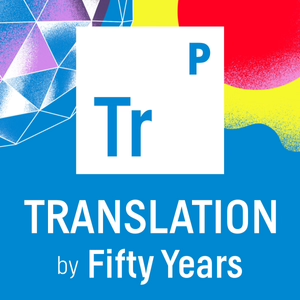
Translation
Ayush Noori, Ashton Trotman-Grant, Michael Chavez, Seth Bannon
All episodes
Best episodes
Seasons
Top 10 Translation Episodes
Goodpods has curated a list of the 10 best Translation episodes, ranked by the number of listens and likes each episode have garnered from our listeners. If you are listening to Translation for the first time, there's no better place to start than with one of these standout episodes. If you are a fan of the show, vote for your favorite Translation episode by adding your comments to the episode page.
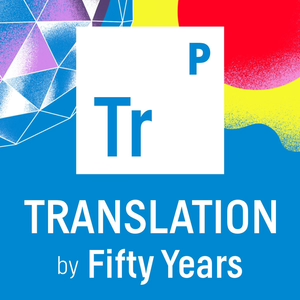
11/09/22 • 98 min
Episode Summary
Chimeric antigen receptors, or CARs, repurpose the build-in targeting and homing signals of our immune system to direct T cells to find and eliminate cancers. Although CAR-T cells have transformed the care of liquid tumors in the circulating blood, like B cell leukemia and lymphoma, CAR-T therapy has shown limited efficacy against solid tumors. To unlock the full potential of CAR-T therapies, better receptor designs are needed. Unfortunately, the space of potential designs is too large to check one by one. To design better CARs, Dan and his co-author Camillia Azimi developed CAR Pooling, an approach to multiplex CAR designs by testing many at once with different immune costimulatory domains. They select the CARs that exhibit the best anti-tumor response and develop novel CARs that endow the T cells with better anti-tumor properties. Their methods and designs may help us develop therapies for refractory, treatment-resistant cancers, and may enable CAR-T cells to cure infectious diseases, autoimmunity, and beyond.
About the Author
- During his PhD in George Church’s lab at Harvard Medical School, Dan studied interactions between bacterial transcription and translation, built and measured libraries of tunable synthetic biosensors, and constructed a new version of the E. coli genome capable of incorporating new synthetic amino acids into its proteins. He also built a high-throughput microbial genome design and analysis software platform called Millstone.
- As a Jane Coffin Childs Postdoctoral Fellow at UCSF, Dan is currently applying these high-throughput synthetic approaches to engineer T cells for the treatment of cancer and autoimmune disease. He is also working in the Bluestone, Roybal, and Marson labs.
Key Takeaways
- By genetically engineering the chimeric antigen receptor (CAR), T cells can be programmed to target new proteins that are markers of cancer, infectious diseases, and other important disorders.
- However, to realize this vision, more powerful CARs with better designs are needed - current CAR-T therapies have their restraints, including limited performance against solid tumors and lack of persistence and long-term efficacy in patients.
- An important part of the CAR response is “costimulation,” which is mediated by the 4-1BB or CD28 intracellular domains in all CARs currently in the clinic. Better designs of costimulatory domains could unlock the next-generation of CAR-T therapies.
- Since there are so many possibilities for costimulatory domain designs, it’s difficult to test them all in the lab.
- Based on his experience in the Church Lab, Dan has developed tools to “multiplex” biological experiments; that is, to test multiple biological hypotheses in the same experiment and increase the screening power.
- Dan and his co-author Camillia Azimi developed “CAR Pooling”, a multiplexed approach to test many CAR designs at once.
- Using CAR Pooling, Dan tested 40 CARs with different costimulatory domains in pooled assays and identified several novel cosignaling domains from the TNF receptor family that enhance persistence or cytotoxicity over FDA-approved CARs.
- To characterize the different CARs, Dan also used RNA-sequencing.
Impact
- The CAR Pooling approach may enable new, potent CAR-T therapies that can change the game for solid tumors and other cancers that are currently tough to treat.
- Highly multiplexed approaches like CAR Pooling will allow us to build highly complex, programmable systems and design the future of cell engineering beyond CAR-T.
- In addition to new therapeutics, high-throughput studies will allow us to understand the “design rules” of synthetic receptors and improve our understanding of basic immunology.
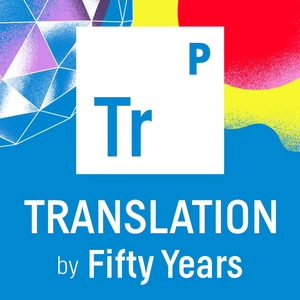
12/29/22 • 42 min
Episode Summary:
In this very special episode of Translation, Seth is joined by Ash Trotman-Grant to demystify spinning out from academia. Much of this knowledge has so far only been available to select groups of academics and PhD founders are at a disadvantage – some potentially breakthrough technologies never saw the light of day and didn’t get a chance to have a real impact. We want to bring the power of the tech transfer process back to entrepreneurial scientists.
Enter the Spinout Playbook – your complete guide to spinning out of academia. In this episode, we chat about the Playbook’s content and share useful tips for entrepreneurial academics eager to spin out their research into an impactful company. Ash shares his experience from spinning out Notch Therapeutics and, together with Seth, they offer brilliant insights into navigating the (up until now) stormy waters of the spinout process.
About the Guests
- Seth is a Founding Partner at Fifty Years, a venture capital firm backing founders using technology to solve the world’s biggest problems.
- Ash is a Synthetic Biologist at Fifty Years and Founder of Notch Therapeutics, a stem cell spin out company from the University of Toronto.
- Ash & the Fifty Years team have created the Spinout Playbook, a living document that will help academic founders spin out their companies from universities and negotiate with Tech Transfer Offices – TTOs.
Key Takeaways
- A spinout is a company that has been developed from a university's research.
- The process of establishing the spinout as a new company involves multiple hurdles, like licensing patents from the tech transfer office, splitting equity among academic and full-time founders, and deciding when to leave academia.
- Universities take months to sign agreements and make startups unfundable by taking too much equity.
- The final licensing agreement may include counter-productive clauses that prevent the company from succeeding.
- University tech transfer offices (TTOs) refuse to negotiate directly with grad students and postdocs.
- For Ash, the creation of Notch Therapeutics was his first real step into the entrepreneurship world and the first encounter with the process of spinning out a company.
- The Spinout Playbook, the newest Fifty Years initiative, will serve as a comprehensive guide for founders and scientists wishing to spin out a company.
Impact
- The Spinout Playbook will help future founders and scientists better navigate the challenges of the process.
- Previously only available to a coterie of academics, the know-how of tech transfer will allow great science to see the light of day more easily.
- A transparent process can give scientists the tools and information they need to build world-changing companies, which is hard enough by itself.
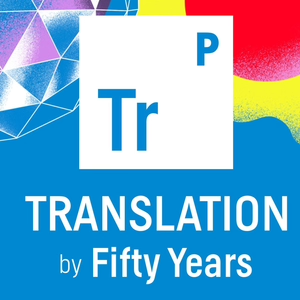
06/08/22 • 54 min
Episode Summary:
Antibodies are one of the greatest tools we have in our therapeutic arsenal and have transformed the way we treat cancer and autoimmunity. But we still largely develop these drugs using guess and check methods, massively slowing down the process. However, our own B cells are constantly making new antibodies against the pathogens and diseases we routinely suffer from, creating a gold mine of drugs floating around inside all of us. We just need to find them! Recognizing this challenge, Nima and his team at Avail Bio have leveraged their deep experience in computation and systems immunology to build a platform that massively screens the antibody repertoire of patients who have successfully cleared a disease. With it, they find ready-to-deploy antibody drugs that could treat everything from cancer to autoimmunity and even reprogram our own immune system!
Search Keywords: fifty years, bio, translation, antibodies, B cells, cancer, autoimmunity, immunology, avail bio, nima emami
Episode Notes:
About the Guest
Nima Emami is the CEO & co-founder of Avail Bio. He received a PhD in Bioinformatics from the UCSF Cancer Center, and studied Bioengineering, Electrical Engineering and Computer Science at UC Berkeley.
Key Takeaways
The immune system contains a massive diversity of antibodies that hold clues on how to fight disease. Avail has developed a platform to discover and develop these antibodies for cancer and autoimmune disease.
Companies that spin out of universities can pair with accelerators early on to both raise funding and make progress with a small amount of capital. The most challenging part of pulling IP out of a university is speed. Public universities that generate many spinouts are often overwhelmed with the amount of inventions disclosed concurrently, which lengthens the time required for tech transfer.
Avail’s platform combines synbio, machine learning and genomics to both discover and validate targets, and ultimately translate those targets into drugs. Failure of clinical stage programs in cancer trials can be traced back to the failure of mouse models to faithfully recapitulate the cancer biology or the immunobiology that we see in humans.
The future that Avail hopes to create is one where drugs developed using their platform will reach patients, thereby changing the drug discovery paradigm to be more data-driven.
Impact
The platform that Avail is building peers inside the human immune response to find and develop novel antibodies to cure cancer and autoimmune disease.
Company: Avail Bio
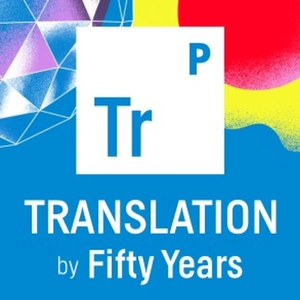
06/01/23 • 50 min
Episode Summary:
Millions of people die every year from chronic diseases. Traditional drug discovery has failed in identifying solutions to many of these persistent health challenges. Functional genomics is offering a way forward by identifying gene networks and enabling the development of drugs with very specific targets. But, rather than just relying on gene targets within humans, Linda and her company, Fauna Bio, are casting a wider net across the animal kingdom. Extreme adaptation is common across many mammals, giving us an incredible pool of potential targets to go after. Whereas a single heart attack can kill a person, certain animals not only survive 25 heart attacks a year but also go on to thrive, living 2x longer than other mammals their size. By identifying and understanding the gene networks underlying these extreme adaptations, Fauna can identify novel targets across 415 different species, map them to human genes, and develop drugs that exploit our natural protective physiological mechanisms.
About the Guest
- Linda is the Co-Founder and CTO at Fauna Bio, a biotechnology company leveraging the science of hibernation to improve healthcare for humans. She earned an MPhil in Computational Biology from the University of Cambridge and got her Ph.D. in Genetics and Genomics from Harvard University. She previously held positions at the Broad Institute and Stanford University studying comparative mammalian genomics and human disease genetics.
Key Takeaways
- Many mammals have evolved complex adaptations that enable them to survive in extreme environments or withstand physiological events that humans cannot.
- At Fauna Bio, Linda Goodman and her team are working to better understand the biological networks that underlie these adaptations, in hopes of developing therapeutics inspired by the adaptations of the animal kingdom.
Impact
- Drawing on a completely new source of knowledge about the defense mechanisms of living organisms, Fauna Bio goes beyond the limitations of traditional drug development and looks for better, more effective drugs based on natural defense mechanisms.
Company: Fauna Bio
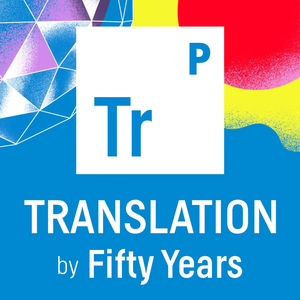
10/10/22 • 29 min
Episode Summary:
Technologies like next-generation sequencing allow us to understand which RNA transcripts and proteins are expressed in biological tissues. However, it’s often equally important to understand how cells or molecules are positioned relative to one another! Whether it be a cell changing its shape, an organelle ramping up a metabolic process, or a DNA molecule traveling across the nucleus, understanding spatial context is critical. Current approaches for spatial sequencing are limited by cost, complicated equipment, sample damage, or low resolution. Recognizing this challenge, Josie and team developed Light-seq, a cheap and accessible method to combine sequencing and imaging in intact biological samples. Not only is the method inexpensive, but Light-seq can also achieve unprecedented spatial resolution by using light to add genetic barcodes to any RNA, allowing scientists to determine exactly where sequencing should occur with extreme precision. By helping researchers to understand spatial context, Light-seq-driven insights may illuminate cancer, neurodegeneration, and autoimmunity.
Episode Notes:
About the Author
- Following her lifelong passion for computer programming, Josie studied Computer Science at Caltech and worked as a software engineering intern at Google. At Caltech, a biomolecular computation course introduced her to the field of biomolecular programming. Josie was quickly excited about the intersection of computers and biology and its potential to bring about positive change in the world. She pursued this interest in her graduate studies in the Wyss Institute for Biologically Inspired Engineering at Harvard, where – as first a postdoctoral fellow, and then the Technology Development Fellow – she developed platform technologies for DNA-based imaging and sequencing assays.
Key Takeaways
- Next-generation sequencing is a powerful technology to read the transcriptomic state of biological tissues by surveying the RNA transcripts present.
- However, it’s important to understand not only what is being expressed but where this expression occurs! The spatial arrangement, structure, and interactions between molecules are critical to define the functions of biological systems.
- By linking imaging with -omics profiling, the field of spatial biology seeks to understand molecules like RNAs in their 2D and 3D contexts.
- Unfortunately, currently available spatial transcriptomics methods are limited in their ability to select individual cells with complex morphologies, require expensive instrumentation or complex microfluidics setups to the tune of several $100K, and often damage the samples.
- Further, rare cells are often missed due to lower sequencing throughput, even though they may be critical for biological activity.
- Recognizing this challenge, Josie and her collaborators developed Light-seq, a new, cheap, and accessible approach for single-cell spatial indexing and sequencing of intact biological samples.
- Using light-controlled nucleotide crosslinking chemistry, Light-seq can correlate multi-dimensional and high-resolution cellular phenotypes – like morphology, protein markers, spatial organization) – to transcriptomic profiles across diverse sample types.
- In particular, using the biological equivalent of photolithography, Light-seq can add genetic barcodes to any RNA by shining light on it, allowing scientists to control exactly where sequencing should occur with extreme precision – up to the subcellular level.
- Light-seq can operate directly on the sample: the method does not require cellular dissociation, microfluidic separation/sorting, or custom capture substrates or pre-patterned slides.
- Samples used for Light-seq remain intact for downstream analysis post-sequencing.
- Josie evaluated Light-seq on mouse retinal sections to barcode three different cell layers and study the rare dopaminergic amacrine cells (DACs).
Impact
- Josie created a cheap, accessible, and powerful tool for scientists to perform spatial sequencing at unprecedented resolution without requiring expensive or complicated setups.
- By enabling new advances in spatial biology, Light-seq has the potential to help biologists discover biomarkers for disease, measure on and off target effects of therapeutic candidates, and illuminate poorly understood biological mechanisms where understanding spatial context makes all the difference.
Author: Josie Kishi

10/07/21 • 36 min
Episode Summary:
COVID-19 tests have become synonymous with jamming a swab up our nose to find out whether we have an active infection. But as we progress through this pandemic, a test that tells us whether people have antibodies against the virus will be massively important to creating public health initiatives and deciding who to vaccinate next. Unfortunately, these serology tests are exceedingly tedious to perform, inhibiting their widespread use. Realizing this problem, Susanna talks us through how she utilized protein engineering to create a novel serology test that is massively easier and quicker than traditional methods. Importantly, this test can be used in resource low settings to help end the pandemic worldwide.
Episode Notes:
About the Author
- Susanna’s scientist parents and love for the natural world drove her to research biology and chemistry.
- Susanna is most excited about adding new dimensions to biomolecules through bioconjugation to enhance their function.
Key Takeaways
- A serology test is used to see whether a person has antibodies against a specific pathogen.
- Positive serology tests can tell us whether getting the disease led to immunity, whether a vaccine worked, or whether a person is protected from new variants.
- This could be massively useful to help understand who is protected and who to vaccinate next to finally beat the SARS-CoV-2 pandemic.
- Traditional serology tests use hard to scale and overly laborious methods that hinder their adoption, especially in a low resource setting.
- Susanna used protein engineering and leveraged the shape of antibodies to develop an entirely new serology test.
- She engineered protein fusions that when simply mixed with a human sample such as serum or saliva, will generate light if antibodies against COVID-19 are present.
- This much easier test as well as the variety of human samples it can use as inputs make it a much more approachable option and enables its use in low-resource settings.
Translation
- Susanna and her colleagues are working to make this test available for field studies by making the protein easier to ship and making a handheld device that can measure the readout.
- Productizing this test will require more research in how to stabilize the components, incorporate controls, and most importantly, make it high-throughput.
- Susanna hopes to leverage this technology to help us beat the variants of SARS-CoV-2 and eventually rapidly test for other infectious diseases and autoimmunity.
First Author: Susanna Elledge
Paper: Engineering luminescent biosensors for point-of-care SARS-CoV-2 antibody detection

Phage Evolved Medicine with Travis Blum
Translation
09/23/21 • 40 min
Episode Summary: Enzymes that break down other proteins, or proteases, could be used as a powerful therapeutic if they could specifically chew-up disease causing entities. However many proteases are non-specific, breaking any protein in their path, while the specific ones target proteins that would provide no therapeutic benefit. Travis and his colleagues developed a riff on the method known as PANCE that utilizes bacteria and bacterial viruses known as phages to evolve proteins toward a specific goal. With it, he retrains the sequence-specific protease, botulinum neurotoxin, toward new targets and away from its original ones. The novel enzymes Travis generates have the potential to not only stimulate nerve regeneration but also deliver itself to the correct cell types for a whole new type of therapy.
Episode Notes:
About the Author
- Travis is a postdoc who performed this work in the lab of Professor David Liu at Harvard University. The Liu lab is famous for engineering and evolving proteins that can be utilized as massively impactful tools for overcoming diverse diseases.
- Travis’s teachers fostered a curiosity that created a passion for chemistry and ultimately led him to engineer new biochemistries.
Key Takeaways
- Proteases are enzymes that cut up other proteins.
- Proteases can either be non-specific, a nuke obliterating any protein in their path, or sequence-specific, a heat seeking missile only cutting very specific protein motifs.
- Sequence-specific proteases that target disease causing proteins would make great drugs but therapeutically useful proteases rarely exist in nature.
- Travis focuses on re-engineering the sequence-specific protease known as botulinum neurotoxin so that it cuts an entirely new, therapeutically relevant protein sequence.
- Using a method called PANCE that utilizes bacteria and bacterial viruses (phages), Travis trains botulinum neurotoxin toward cutting a new target and leaving its original target alone.
Translation
- Botulinum neurotoxin has a cutting domain that Travis engineered toward a therapeutically relevant target, and a targeting domain that delivers the protein toward neurons.
- The enzymes generated could be used to cure neural pathologies but the PANCE could also be applied to change which cell type the protease targets, creating a highly programmable therapeutic protease platform.
- The platform has a ton of interest from industry and Travis is continuing to work on it outside of academia so that these proteases make it to the clinic and impact patient lives.
First Author: Travis Blum
Paper:
Phage-assisted evolution of botulinum neurotoxin proteases with reprogrammed specificity

Low-N Protein Engineering with Surge Biswas
Translation
10/06/20 • 29 min
Protein engineering has been dominated by two opposing paradigms; directed evolution, a massive screening technique, and rational design, a completely computational approach. Surge has fused these two paradigms by developing a machine learning technique that discovers an optimal protein design by training on a low number of engineered proteins. Here, Surge discusses how this hybrid method works, how it enabled the creation of better fluorophores and enzymes, and what this method will unlock next.
About the Author
- Surge performed this work as a graduate student at Harvard in the lab of Professor George Church. George is one of the founding fathers of synthetic biology and the lab is known for developing high throughput methods to design, build, and test bioengineered parts.
- As CEO and co-founder of Nabla Bio, Surge is now focused on pointing the algorithms and methods developed in his academic work toward building proteins that can improve human health or protect the environment.
Key Takeaways
- Methods from natural language processing algorithms (like Siri or Alexa) are adapted to understand how nature builds proteins.
- These machine learning algorithms distill fundamental structural, as well as evolutionary and and biophysical properties about proteins.
- Fusing these models with real world data enables us to make proteins with improved or novel functionality.
- By checking how a few mutations (low-n) affect the function of a protein, Surge evolved proteins in a computer to make better fluorescent proteins and enzymes.
- These models know a lot about proteins in general and can therefore be applied to a wide variety of tasks that improve human health and protect the environment.
Translation
- This methodology dramatically reduces the time, cost, and labor of evolving proteins, making it a perfect tool to create commodity proteins.
- Based on this technology, Surge co-founded Nabla Bio whose goal is to engineer supernatural proteins that enable biology to solve the world's biggest problems.
First Author: Surojit “Surge” Biswas
Paper: Low-N protein engineering with data-efficient deep learning. bioRxiV, 2020.
Follow Fifty Years on Twitter!
If you’re an author of an upcoming paper in bio or know of any interesting papers dropping soon and want to hear from the authors, drop us an email at translation [AT] fifty [DOT] vc.

10/20/20 • 44 min
Commodity molecules are vital ingredients for everything important to our modern world including food, energy, and medicine. However, creating these molecules still largely relies on old processes that suffer from low yield, laborious methods, and unsustainable inputs and byproducts. Tina envisions a world where all molecules are created quickly, easily, and sustainably through enzymes, biology’s chemical catalyst. Here, Tina describes how she used an extremely powerful method called directed evolution to build a novel enzyme that can create the non-canonical amino acid 4-cyanotryptophan, a fluorescent molecule that is extremely difficult to make with traditional chemistry.
About the Author
- Tina performed this work as a postdoc in the lab of Nobel Laureate Professor Frances Arnold at Caltech. The lab is world renowned for developing the methods around directed evolution and applying them to create proteins that do unnatural chemistries.
- Tina is now the co-founder and CEO at Aralez Bio whose focus is on developing efficient, sustainable alternatives to chemical manufacturing through enzyme engineering.
Key Takeaways
- Enzymes are proteins that induce specific chemical reactions to occur. They can create molecules much more efficiently and sustainably than using traditional chemistry
- One class of molecules, called non-canonical amino acids, are extremely important precursors to drugs and have specific properties that make them desirable for biotech.
- Making highly pure non-canonical amino acids is difficult with traditional chemistry, requiring many time-consuming reactions and toxic byproducts. But nature has yet to generate an enzyme that can create these.
- A process called directed evolution mimics nature’s process by heavily mutating a starting enzyme and sequentially pushing it to make a molecule of interest.
- When using directed evolution, “you get what you screen for”. Said another way: the outcome of the process is highly dependent on how the experiment was run and what was optimized for.
- With directed evolution, the non-canonical amino acid 4-cyanotryptophan is generated overnight with no harmful byproducts; something that would take a team of chemists months to do.
Translation
- The evolved enzyme that creates 4-cyanotryptophan became the cornerstone technology of Aralez Bio.
- Tina spent the last parts of her postdoc defining customers and building a team to launch the company.
- Through enzyme engineering, Aralez Bio plans to replace many unsustainable and time consuming chemistries that currently plague commodity molecules.
First Author: Christina Boville
Follow Fifty Years on Twitter!
If you’re an author of an upcoming paper in bio or know of any interesting papers dropping soon and want to hear from the authors, drop us an email at translation [AT] fifty [DOT] vc.

10/27/20 • 51 min
Powered by synthetic biology, Pierce Ogden makes ALL possible mutations to an adeno-associated virus (AAV) outer shell and rapidly screens them to dissect their attributes. Pierce discusses the technological advances that make this breakthrough screen possible and the novel properties that were discovered. AAVs are rapidly becoming the prefered way to perform gene therapy, correcting cells that carry disease-causing mutations through genetic modification. This technology forms the basis for company Dyno Therapeutics.
About the Author
- Pierce performed this work as a postdoc at Harvard University in the lab of Professor George Church. Professor Church is one of the founding fathers of synthetic biology and the lab is renowned for developing high throughput methods to design, build, and test bioengineered parts.
- In his role as Co-Founder & CSO at Manifold Bio, Pierce utilizes his multiplexing expertise to uncover the design principles of protein therapeutics and make new drugs faster than ever before.
Key Takeaways
- Gene therapy uses genetic information as a drug, correcting cells that carry disease-causing mutations.
- The inability to deliver these genes to the correct cells limits the widespread adoption of gene therapy.
- Adeno-associated viruses (AAVs) are an extremely promising way to deliver DNA to human cells. Their outer shell, or capsid, can be engineered for increased safety, specificity, and shelf-life.
- Using advances in DNA synthesis technology, all possible single mutations to the AAV capsid are generated.
- With a DNA barcode read through next generation sequencing, this AAV library was simultaneously tested cheaply and quickly to find mutations with improved properties.
- Increased thermal stability, evasion of immune responses, and specificity toward the brain were all found.
Translation
- Pierce demonstrates that smart usage of our synthetic biology toolbox can allow millions of protein variants to be tested simultaneously, in direct opposition to the “tested in parallel” model that has dominated high-throughput biology.
- Manifold Bio takes this idea of DNA barcodes coupled with simultaneous screening and points it toward the field of protein therapeutics.
First Author: Pierce Ogden
Follow Fifty Years on Twitter!
If you’re an author of an upcoming paper in bio or know of any interesting papers dropping soon and want to hear from the authors, drop us an email at translation [AT] fifty [DOT] vc.
Show more best episodes

Show more best episodes
FAQ
How many episodes does Translation have?
Translation currently has 24 episodes available.
What topics does Translation cover?
The podcast is about Life Sciences, Founder, Impact, Research, Podcasts, Technology, Science, Phd and Biology.
What is the most popular episode on Translation?
The episode title 'Evolving Enzymes to Create Unnatural Compounds with Tina Boville' is the most popular.
What is the average episode length on Translation?
The average episode length on Translation is 48 minutes.
How often are episodes of Translation released?
Episodes of Translation are typically released every 7 days.
When was the first episode of Translation?
The first episode of Translation was released on Oct 6, 2020.
Show more FAQ

Show more FAQ